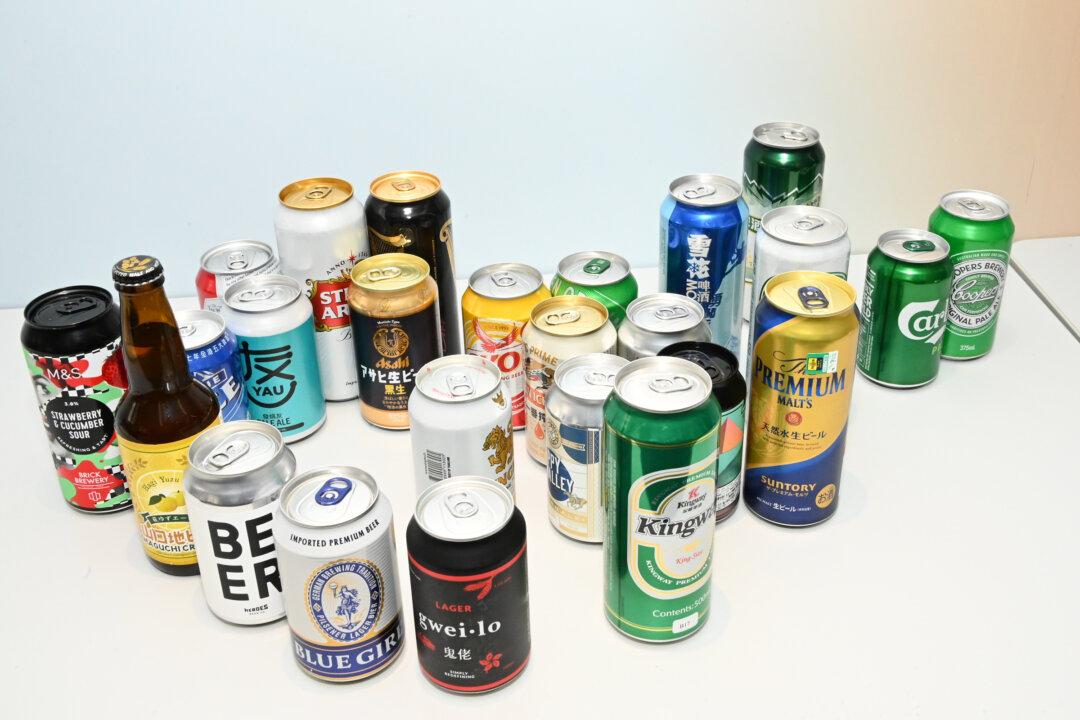The Hong Kong Consumer Council tested 30 beer samples on the market and found that all contained different types and levels of biogenic amines. Excessive intake of biogenic amines may cause headaches, dizziness, vomiting, and the like. One sample was even detected with the mycotoxin “DON,” excessive intake of which may cause symptoms such as nausea, vomiting, and abdominal pain.
The Consumer Council purchased 30 samples of prepackaged canned or bottled beer on the market. The prices per can or bottle range from HK$4.50 to $50 (US$0.6 to US$6.4), the volume ranges from 330ml to 500ml (11.2 fl. ounces to 17 fl. ounces), and the labeled alcohol (ABV) content between 3 percent and 8 percent. The test, this time, focuses primarily on the nutritional value, safety, and quality of the samples.




